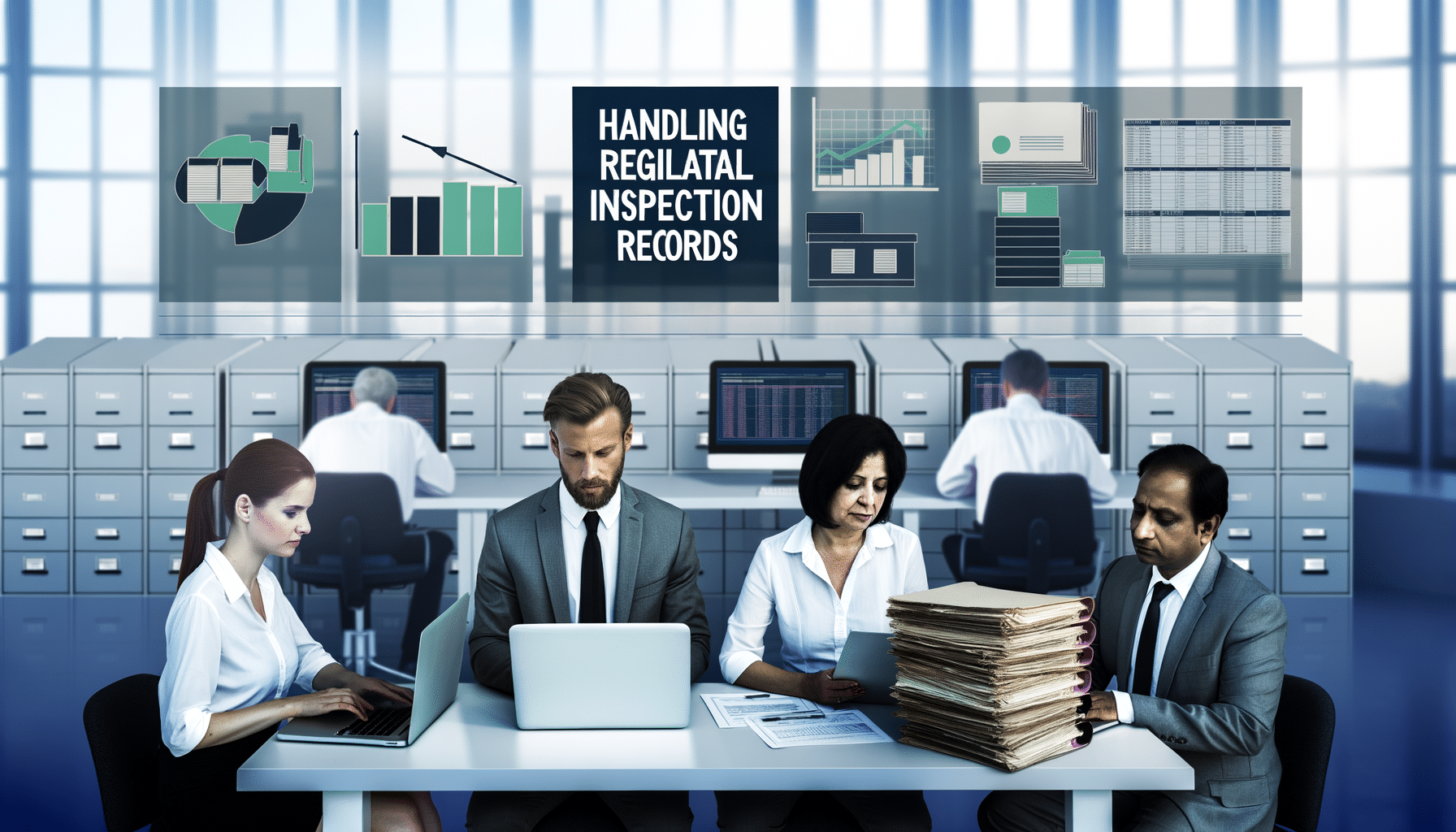- Blockchain Compliance
- November 16, 2024
Overcoming Compliance Evidence Collection Challenges

In the ever-evolving landscape of regulations, navigating the intricacies of compliance evidence collection can often feel like threading through a labyrinth. Trust me, I’ve been there — overwhelmed by the sheer volume of documentation, haunted by the fear of missing a crucial compliance requirement. This challenge is not new, yet it remains formidable for many organizations. But let me assure you, there’s a beacon of hope through automation.
Understanding the Burden of Compliance Evidence Collection
As businesses grow and regulations become more stringent, the burden of compliance evidence collection looms larger. At RecordsKeeper.AI, our mission is to lift that weight from your shoulders. Compliance evidence refers to the data, documents, and records that demonstrate adherence to regulatory standards such as GDPR, HIPAA, or SOX. Failing to promptly present valid evidence can result in significant legal and financial repercussions. So, how do we tackle this challenge effectively?
The Role of Automation in Compliance
Automation is revolutionizing compliance workflows, enabling a systematic collection and organization of evidence. By integrating AI-driven tools, businesses can automate the categorization of documents, ensuring that all necessary compliance evidence is effortlessly compiled and stored.
Consider this: your compliance evidence collection process is akin to assembling a puzzle. Every piece is crucial, and missing ones can lead to incomplete oversight. Automation ensures that every piece is accounted for, rendering compliance issues a thing of the past.
Key Benefits of Automated Compliance Evidence Collection
- Enhanced Efficiency: Automation streamlines the evidence collection process, reducing the time and effort required by human staff. This allows teams to focus on high-value tasks rather than manual data collation.
- Accuracy and Consistency: AI systems minimize human error, ensuring that evidence is collected consistently and accurately across the board.
- Real-Time Verification: With automated workflows, verification happens in real-time, providing immediate alerts if discrepancies are detected.
- Scalability: As your organization grows, automated systems can scale effortlessly, managing vast volumes of compliance evidence without additional manpower.
Blockchain: The Next Frontier in Evidence Integrity
Blockchain technology is another game-changer in safeguarding the integrity of compliance evidence. By employing blockchain, businesses can ensure that their records are tamper-proof and immutable. At RecordsKeeper.AI, we integrate blockchain technology to provide an extra layer of security, ensuring that all evidence is time-stamped and verifiable.
Imagine having an immutable trail of every piece of compliance evidence, guaranteeing its validity and eliminating disputes over data integrity. Blockchain makes this possible, revolutionizing how evidence is perceived and utilized in compliance frameworks.
Real-Life Applications: The Power of Automation in Action
Case Study: Healthcare Compliance
Let me share an eye-opening example from the healthcare sector. A client of ours was grappling with the hefty demands of HIPAA compliance. Manual evidence collection was not only time-consuming but also prone to errors. After transitioning to our automated system, the organization witnessed a 40% reduction in evidence processing time and an impressive boost in accuracy. The shift not only saved time but also significantly reduced the risk of non-compliance.
Case Study: Financial Sector Adaptation
In the financial realm, SOX compliance is a major concern. Another client leveraged automation for their compliance framework, facilitating seamless evidence collection and verification. The result? A streamlined process that cut audit preparation time by half, enabling them to maintain focus on core financial strategies.
Strategies for Implementing Automated Compliance Solutions
Now, if you’re wondering how to integrate these solutions into your organization, here are some actionable steps:
- Evaluate Your Current Process: Identify bottlenecks and inefficiencies in your current compliance evidence collection workflows.
- Select the Right Technology: Choose a platform that aligns with your organization’s needs. Ensure it offers AI-driven automation, blockchain integration, and scalability.
- Training and Buy-In: Provide training for your team to familiarize them with the new system. Foster a culture that embraces technological advancements.
- Continuous Monitoring and Optimization: Regularly assess the effectiveness of the automation processes and make necessary tweaks to optimize performance.
Conclusion
Automating compliance evidence collection isn’t just a trend—it’s a necessity for modern organizations aiming to remain competitive and compliant. At RecordsKeeper.AI, we empower businesses to transform this cumbersome task into a strategic advantage. By embracing AI and blockchain technologies, you can rest assured that your compliance efforts are fortified against future challenges.
I invite you, whether you are at the helm of legal, finance, or compliance operations, to explore how automation can redefine your compliance journey. Follow my insights, and let’s navigate this digital transformation together for a more secure and efficient future.
Toshendra Sharma is the visionary founder and CEO of RecordsKeeper.AI, spearheading the fusion of AI and blockchain to redefine enterprise record management. With a groundbreaking approach to solving complex business challenges, Toshendra combines deep expertise in blockchain and artificial intelligence with an acute understanding of enterprise compliance and security needs.
Related Posts


Handling Regulatory Inspection Records
Managing documentation for regulatory compliance.
- January 3, 2025
Archives
- January 2025
- December 2024
- November 2024
- October 2024
- September 2024
- August 2024
- July 2024
- June 2024
- May 2024
- April 2024
- March 2024
- February 2024
- January 2024
- December 2023
- November 2023
- October 2023
- September 2023
- August 2023
- July 2023
- June 2023
- May 2023
- April 2023
- March 2023
- February 2023
- January 2023
- December 2022
- November 2022
- October 2022
- September 2022
Want to get more content like this?
Signup to directly get this type of content to your inbox!!
Latest Post
Document Control for Equipment Maintenance
- January 20, 2025
Managing Records for Multiple Clients
- January 19, 2025
Handling Conference Documentation
- January 18, 2025
Setting Up Department Record Reviews
- January 17, 2025





